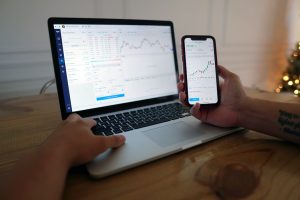Leverage is a tool that is widely used in the foreign exchange (Forex) market. It is a technique that allows traders to increase the size of their position without having to put up the full amount of capital required. In other words, leverage allows traders to amplify their potential profits, but it also increases their risk exposure.
How Does Leverage Work in Forex?
Leverage is essentially borrowing money from a broker to trade a larger position than what a trader can afford with their own capital. The amount of leverage available varies between brokers, but typically ranges from 1:50 to 1:500. For example, if a trader has a leverage of 1:100 and wants to trade a position worth $100,000, they would only need to put up $1,000 of their own capital.
Leverage is expressed as a ratio. The ratio represents the amount of margin required to open and maintain a position in the market. Margin is the amount of money that a trader needs to put up to open a trade, and it is typically expressed as a percentage of the total trade value.
For example, if a trader has a leverage of 1:100, they would need to put up 1% of the total trade value as margin. If they were trading a position worth $100,000, they would need to put up $1,000 as margin.
Benefits of Leverage in Forex
One of the main benefits of leverage in Forex is that it allows traders to make larger profits with a smaller amount of capital. This is because they can trade larger positions than they would otherwise be able to with their own capital.
Another benefit of leverage is that it allows traders to diversify their portfolio by trading multiple positions simultaneously. This can help to spread the risk across different markets and reduce the overall risk exposure.
Drawbacks of Leverage in Forex
While leverage can increase potential profits, it also increases the risk exposure. This is because the larger the position, the larger the potential losses if the trade goes against the trader.
One of the biggest drawbacks of leverage is that it can lead to significant losses if the market moves against the trader. This is because leverage amplifies any losses as well as profits.
It is important for traders to use leverage wisely and to always have a risk management strategy in place. This may include setting stop-loss orders to limit potential losses and only trading with a small percentage of their account balance.
Conclusion
In conclusion, leverage is a powerful tool that can help traders to increase their potential profits in the Forex market. However, it is important for traders to use leverage wisely and to always have a risk management strategy in place to limit potential losses. By understanding how leverage works and its benefits and drawbacks, traders can make informed decisions about how to use it in their trading strategies.





